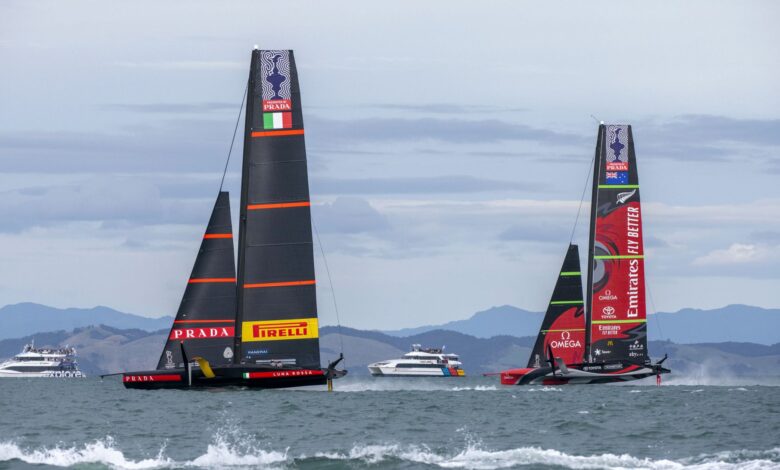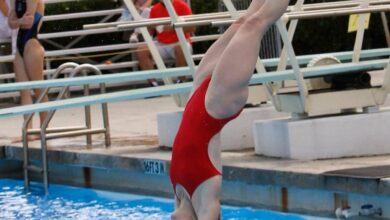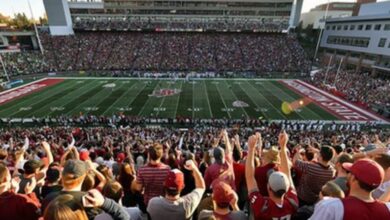The lead, not speed, is a key so far in America’s Cup racing

As long as America’s Cup racing remains on the “back paddock,” a lead may be worth more than speed.
That may be the lesson of the first day of racing in the 36th Cup match on Wednesday which left defender Team New Zealand and Italian challenger Luna Rossa locked at 1-1 in the best-of-13 race series.
Due to COVID-19 lockdown regulations in Auckland, racing took place on course E, the most distant of the Cup racecourses, known as the back paddock for its remoteness.
After a lay day Thursday, the course likely will be used again in racing on Friday because of its distance from land. That helps discourage large gatherings at vantage points on the shore — under Auckland’s current alert level 2, gatherings are restricted to 100 people and the America’s Cup village is closed.
The advantage and disadvantage of course E is that it tends to provide a more consistent breeze than other courses where the wind is more affected by the land.
That was evident in both races on Wednesday which were won by the boat that won the start. With little chance of a significant wind shift, it was almost impossible for the trailing yacht to pass unless the leading boat made a mistake.
Team New Zealand won the start in the first race and won the race by 31 seconds; Luna Rossa won the start in the second race and held off Team New Zealand to win by seven seconds.
The evidence seemed to show that the New Zealand boat has a slight speed edge, at least in the conditions in which Wednesday’s races were sailed. The data indicated Team New Zealand’s boat Te Rehutai had a slightly faster average speed upwind and downwind.
That was evident in the second race when Te Rehutai, trailing by 24 seconds after four legs, halved Luna Rossa’s lead on the final beat and cut it from 12 to seven seconds on the last leg.
“I think we’re still pretty happy with how our boat’s going,” New Zealand helmsman Peter Burling said. ”(Wednesday) was obviously a pretty tricky day.
“There was a lot of small wind shifts. I think one thing (Wednesday) did show is that if you get behind at the start it’s pretty hard to get past.”
Luna Rossa co-helmsman Francesco Bruni said the importance of winning the start had been strongly emphasized in recent racing in the Prada Cup final and the start of the America’s Cup match.
“I think what happened lately, in the last six or eight races we sailed, they have been in pretty stable breeze, nothing like the southwesterly on course C,” he said. “I think that explains a lot why the team that is leading at the start is capitalizing through the race.
“I think once the breeze is more shifty and patchy you will see more passes.”
Course C is closer to land and the wind on the course is affected by North Head and nearby islands. In a race between Luna Rossa and Britain’s Team UK on that course, there were nine lead changes.
If the match continues on other courses, boat speed will likely again but a key issue.
“It’s still the fastest boat that will win the Cup,” Burling said.
Luna Rossa co-helmsman Jimmy Spithill agreed.
“The quickest boat will win the Cup, end of story,” he said.
___
More AP sports: https://apnews.com/apf-sports and https://twitter.com/AP_Sports






